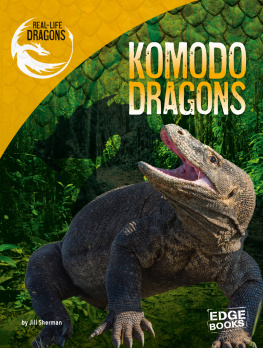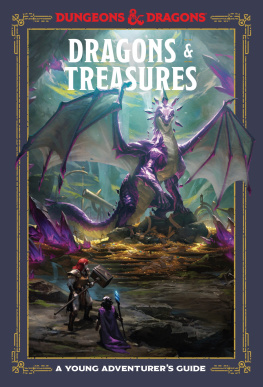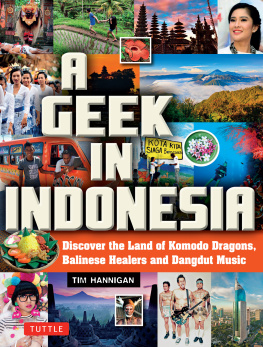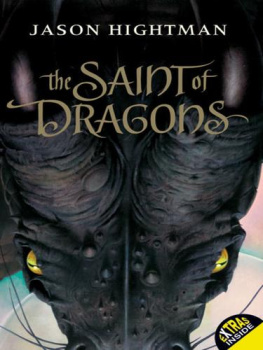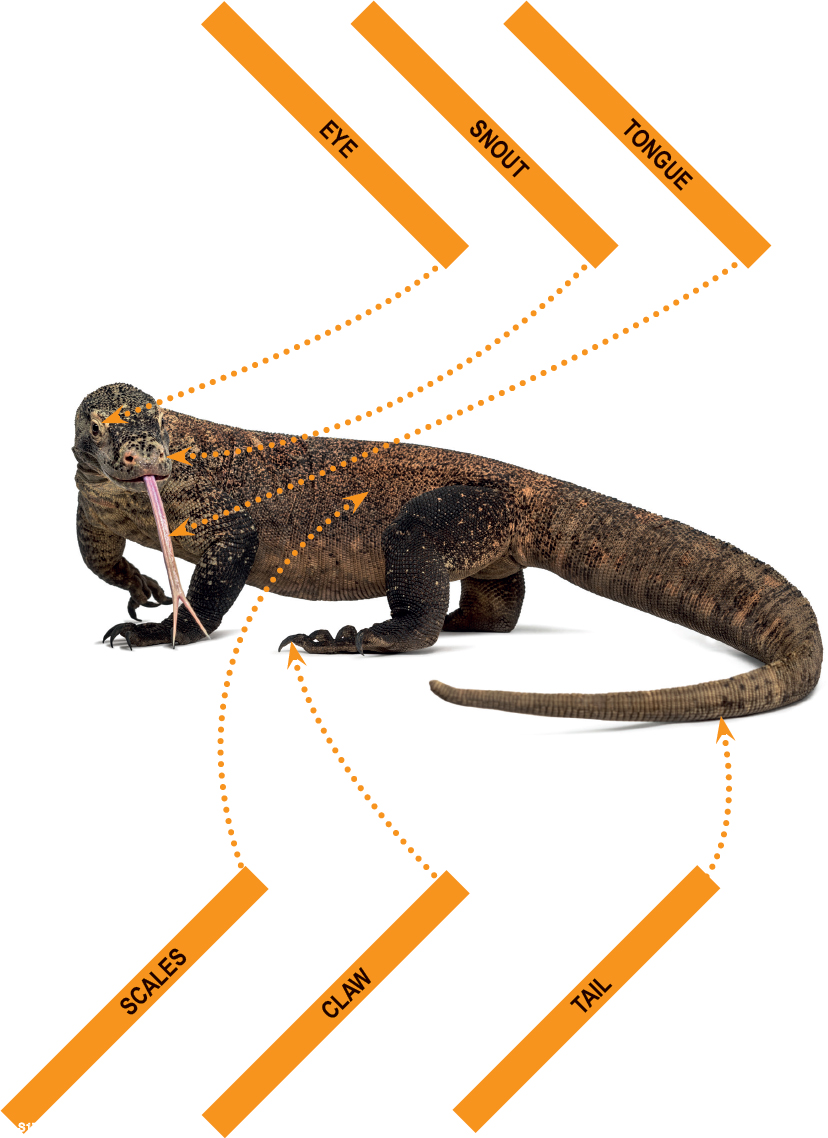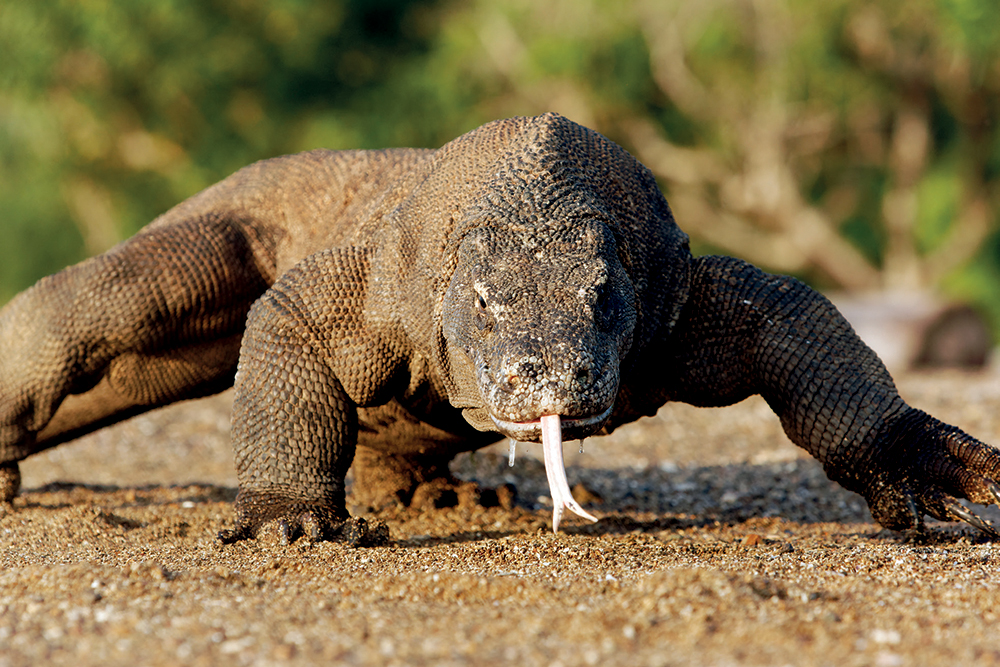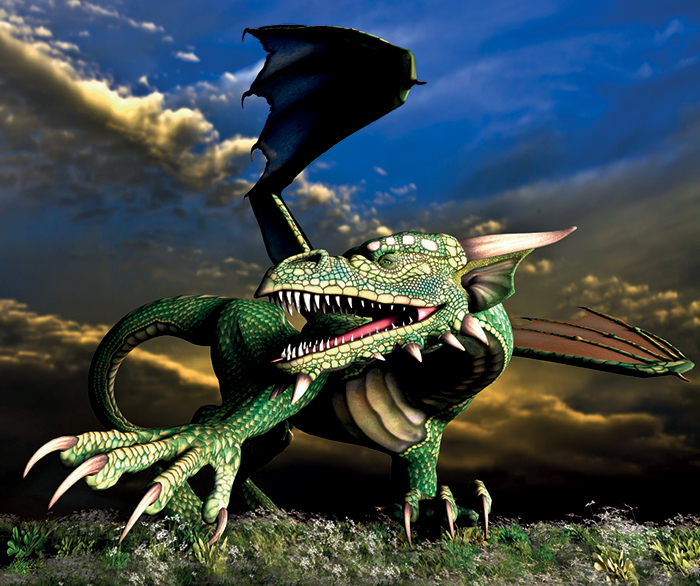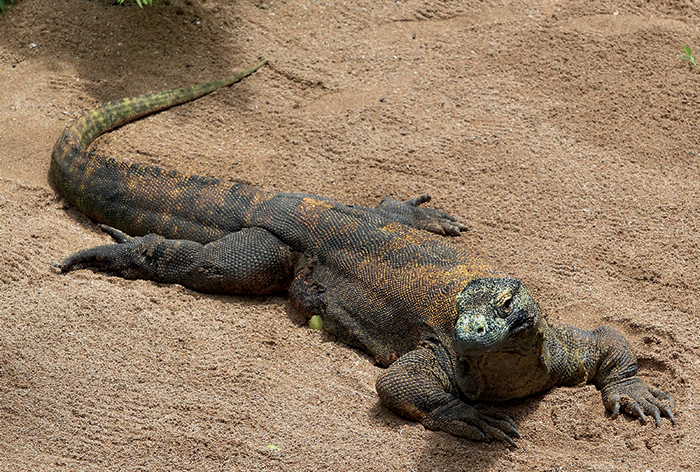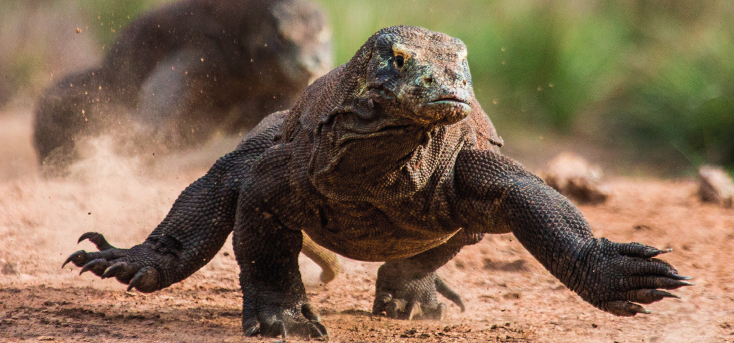KOMODO DRAGON FACTS
- COMMON NAME:
- Komodo dragon, also called the Komodo monitor; called ora (land crocodile) by people of Komodo Island
- SCIENTIFIC NAME:
- Varanus komodoensis
- RANGE:
- Indonesias Lesser Sunda Islands (Komodo, Rinca, Gili Montang, Gili Dasami, and Flores)
- HABITAT:
- tropical savanna forests, beaches, and ridgetops
- SIZE:
- up to 10.3 feet (3.1 m) long; can weight up to 366 pounds (166 kg); average weight is about 154 pounds (70 kg)
- COLOR:
- Adults are typically brown, green, or gray and can have hues of black, blue, orange, red, or yellow. Young are green with black and yellow markings. Tongues normally are yellow.
- NATURAL PREDATORS:
- none
- PREY:
- large prey, such as large water buffalo, deer, carrion, and pigs
- LIFE SPAN:
- 30 years
GLOSSARY
(BUHR-oh) an underground home of an animal (KA-muh-flahzh) coloring or covering that makes animals, people, and objects look like their surroundings (kahr-NI-vuh-ruhss) eating only meat (KOHLD-BLUHD-id) having a body that needs to get heat from its surroundings (DAH-muh-nanss) control because of strength or power (in-DAYN-juhrd) at risk of dying out (FOOD CHAYN) a series of organisms in which each one in the series eats the one before it (INK-yoo-bate) to keep eggs at a suitable temperature while they develop (MATE) to join together to produce young (NAY-tuhv) a species that lives and grows naturally in an area (POHCH) to fish or hunt illegally (PRED-uh-tur) an animal that hunts another animal for food (PRAY) an animal hunted by another animal for food (RAYNJ) an area where an animal mostly lives (SKAV-uhnj) to feed on dead animals or plants (SER-ay-tid) having a jagged edge (TER-uh-tor-ee) an area of land that an animal claims as its own to live in (VEN-uhm) a toxic substance some animals produce to stun or kill prey
READ MORE
- Ganeri, Anita. The Story of the Komodo Dragon. Fabulous Animals. Chicago: Raintree, 2016.
- Hirsch, Rebecca E. Komodo Dragons: Deadly Hunting Reptiles. Comparing Animal Traits. Minneapolis: Lerner Publishing, 2015.
- Pope, Kristen. On the Hunt with Komodo Dragons. On the Hunt with Animal Predators. Mankato, Minn.: Childs World, 2016.
CRITICAL THINKING USING THE COMMON CORE
- Where does the Komodo dragon live? Name two features about where it lives. (Key Idea and Details)
- Reread the Dragon Fact on . Use a dictionary to define the word vulnerable. (Craft and Structure)
- Name one body part that helps the Komodo dragon hunt. What if it did not have this body part? How might it hunt differently? (Integration of Knowledge and Ideas)
INDEX
- ears,
- eating,
- eggs,
- eyelids,
- eyesight,
- Komodo Island,
- Komodo National Park,
- scales,
- size,
- snouts,
- speed,
- swimming,
- tails,
- teeth,
- territories,
- threats,
- tongues,
CHAPTER 1
A REAL-LIFE DRAGON
Lumbering out of the jungle comes the worlds largest lizard. From its rounded snout, it flicks its long, forked tongue in and out of its mouth. Its massive body is covered in what looks like armor. Its long, sharp claws look as though they could rip anything apart. Its easy to see how this animal, the Komodo dragon, earned its name.
Komodo dragon
DRAGON MYTH AND REALITY
Youve probably read about dragons in storybooks. These dragons fly through the air. They breathe fire. They may stand guard over a maiden in a tower. These dragons are myths.
The Komodo dragon was once thought to be just a myth. Stories of a dragon-like creature living on the island of Komodo in Indonesia spread for many years. Local people called it a land crocodile. Until about 100 years ago, no outside scientist had actually seen the creature. When one scientist finally saw the huge beasts with his own eyes, he named it Komodo dragon, after the creatures of myth.
CHAPTER 2
SPOTTING A KOMODO DRAGON
The Komodo dragon is a gigantic beast. Its long body stretches up to 10.3 feet (3.1 meters) long. Its tail is huge and muscular. The animal weighs about 154 pounds (70 kilograms). At such a large size, this creature easily overpowers its .
The Komodo dragon moves its wide, flat head and rounded snout as it checks out its surroundings. A long, forked tongue flicks in and out of its mouth. Its teeth are sharp and .
The largest Komodo dragons weigh up to 366 pounds (166 kg). However, average Komodos weigh less than half that size.
DRAGON FACT
Komodo dragons are rarely spotted in the wild. For scientists to study them, they must set out food to lure the creatures out of hiding.
Rough, bony scales cover the dragons entire body. This tough, armored skin may be blue, orange, gray, or green. It helps give the Komodo its fearsome appearance.
The creatures bowed legs may make it look clumsy. But this does little to slow the Komodo down. It can sprint up to 13 miles (20 kilometers) per hour. Its as fast as some dogs. Each muscular leg ends in long, pointed claws. The claws help rip apart the dragons prey.
Dragon Teeth
The Komodo dragons mouth holds 60 short, razor-sharp teeth. The teeth curve inward. This helps it tear into prey. Komodos go through many sets of teeth. A Komodo dragon may go through four or five sets of teeth in its lifetime.
A BEAST AMONG LIZARDS
Komodo dragons are lizards. Lizards are a type of reptile. All reptiles have dry, scaly skin. Scientists further divide lizards into groups. Komodo dragons are a kind of monitor lizard. The monitors have powerful jaws. Their tails are long and whiplike. Komodo dragons are the largest and heaviest lizards on Earth.

